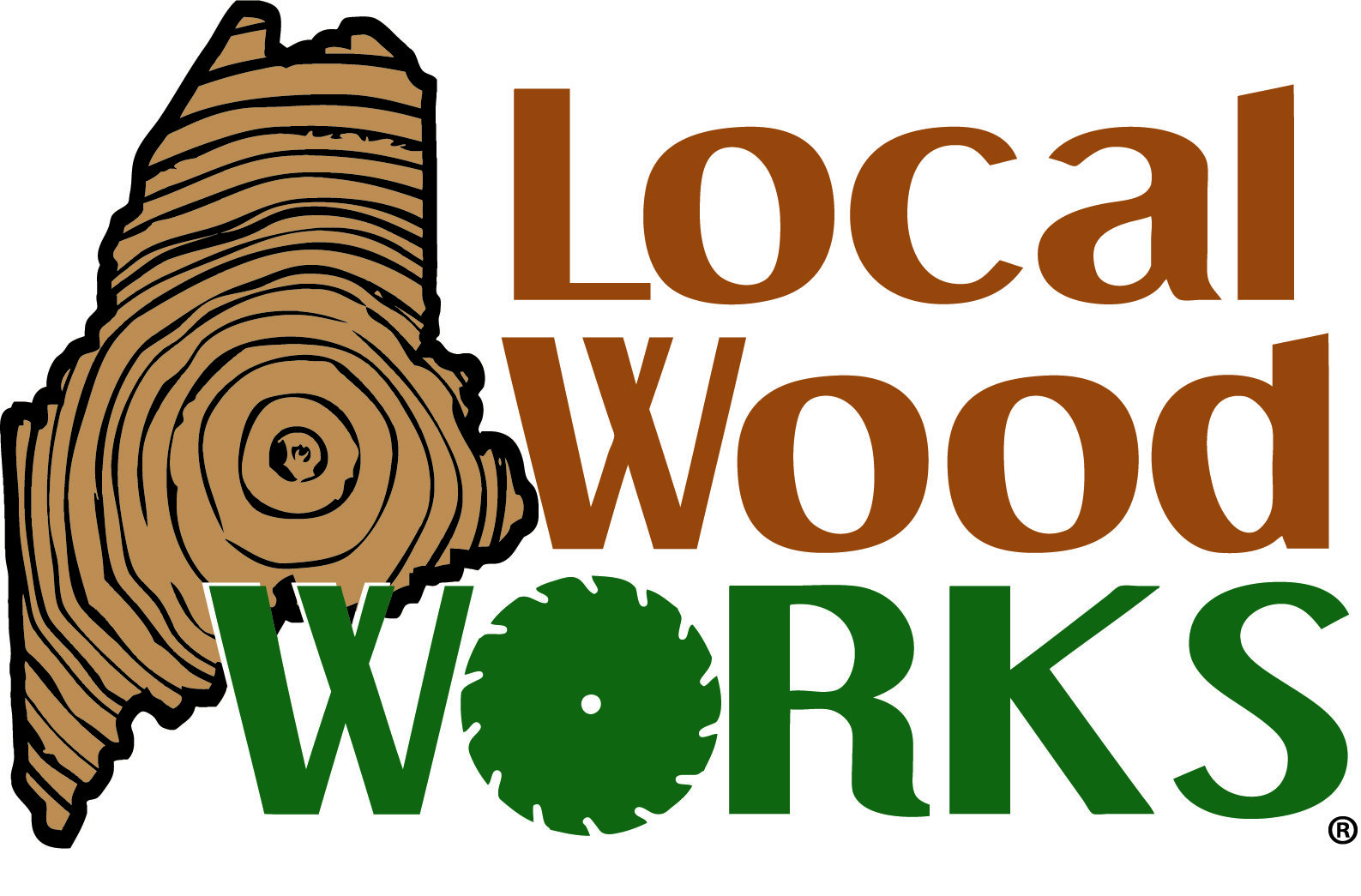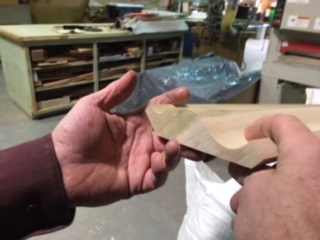Paul Sampson grows, mills and builds with Maine wood
By Joe Rankin
A.E. Sampson & Son produces wood flooring in as many varieties as ice cream has flavors.
Co-owner Paul Sampson runs down the list.
“White ash, sugar maple, cherry, aspen, butternut, red maple, ‘roasted’ or heat-treated birch, ‘red’ birch, red oak.
“African mahogany, South American mahogany, teak, walnut, wenge, white birch, white pine, longleaf pine . . .” He’s looking at the list in his mind.
“Caribbean heart pine, southern yellow poplar, basswood, hickory, southern yellow pine, Goncalo alves, Brazilian cherry, red pine . . .” It goes on. Dozens of samples are on display at the company showroom on Route 1 in Warren, which is open year-round 24/7.
Later in the conversation, he comes back. “Elm. I forgot elm.”
Paul and his wife Jula offer variety because customers ask for it.
But Sampson promotes Maine woods as a cause. It’s his life.
His family has owned a woodlot for many generations and he still logs himself. As a younger man, he followed his father into the cabinet-making business after deciding he wasn’t cut out to be an industrial arts teacher. He and his wife built a house that’s a wood showroom itself.
When asked what wood means to him, he replied, “It’s everything.”
A.E. Sampson keeps five employees busy producing flooring, corner moldings, baseboards, stair treads and risers, balusters, stair handrails and other product. Some 8,000 lineal feet of wood products are produced daily. The 17,000 square-foot shop is crowded with ripsaws, molding machines, and planers. Dust collection keeps the mill spotless. Rolling carts hold rough lumber to be fed into machines, and the neatly stacked finished product — stamped with the A.E. Sampson & Son logo. Sales are about $1.25 million a year.
Sampson is in a hardwood business in a state best known for its softwoods — pine, spruce, fir. He buys as much wood from Maine as he can. “I like to practice what I preach,” he said. Shorter lengths of white oak come from Maine, longer lengths from elsewhere. Lower grades of cherry come from Maine, higher grades from Pennsylvania and New York.
Sampson’s best-selling Maine wood is ‘red birch,’ the reddish heartwood of yellow birch.
“Red birch has been our most popular wood for years, until two years ago it was our biggest seller, when white oak took it over. But based on sales, I think red birch is going to take the lead again,” he said.
Sugar maple is also popular. “It goes in spells,” he said. “It seems to be back now.” Maple doesn’t do as well under radiant flooring, he said, which cuts into sales.
Despite his efforts, Maine-sourced woods account for only 30 to 40 percent of his business.
A minority of builders really care where the lumber comes from, he says. “For most it’s all about time and price. For the 10 percent that do care about it, they really care about it and have built their business around it,” he said. The percentage is higher among homeowners and green-oriented architects, he said.
Wood buying trends bring out strong opinions in him.
The popularity of bamboo drives him crazy. Because it’s a grass, bamboo has a green image. But it has to be sliced thin and glued together, then shipped from China or southeast Asia. “Wouldn’t flooring or cutting boards of Maine-grown maple be greener?” he asks.
Sometimes he takes a pointed approach with newcomers to Maine who are set on using an exotic, mahogany or teak, for example.
“Why would you move to Maine and then want to use wood from elsewhere in your house?”
The Sampson’s home showcases wood from all over and was recently featured in a photo spread in MaineBoats magazine. Each of the 34 (and counting) species of wood was chosen for its character or its back story. The busy grain of ash was chosen for the basement stairwell walls because it hides dings. Painted poplar was chosen for a ceiling because of its warmth. There’s wall paneling from hemlock beams salvaged from the Edwards Dam in Augusta. And table sides made from birch scraps that didn’t make the grade as Lexus gear knobs.
The magazine dubbed it “house of many woods.” Sampson calls it “the house of leftovers.”
Sampson believes the state could do more to promote local woods, including emphasizing growing and marketing hardwoods, and encouraging construction of smaller dry kilns. Most hardwoods are air dried now. With some changes on the supply side and little consumer education, Maine might get a reputation for local woods beyond pine, he said. Which would be a good thing.
“The only way the economy is going to work in a forested state is if trees are grown and harvested,” he said.
“People are definitely less educated about their building materials than they are about their food,” Sampson said. He occasionally notes a disconnect in their loyalty in buying the local farmers’ market. “But then I say to myself, ‘wait, you just put Brazilian cherry down in your home.’ “
He looks forward to the day when local wood has the cachet of local food. He’s hopeful for the next generation, even though he believes they are more removed from being outside and knowing the trees.
“They do have a little more desire to learn and ask if they are making a good environmental decision,” he said.



